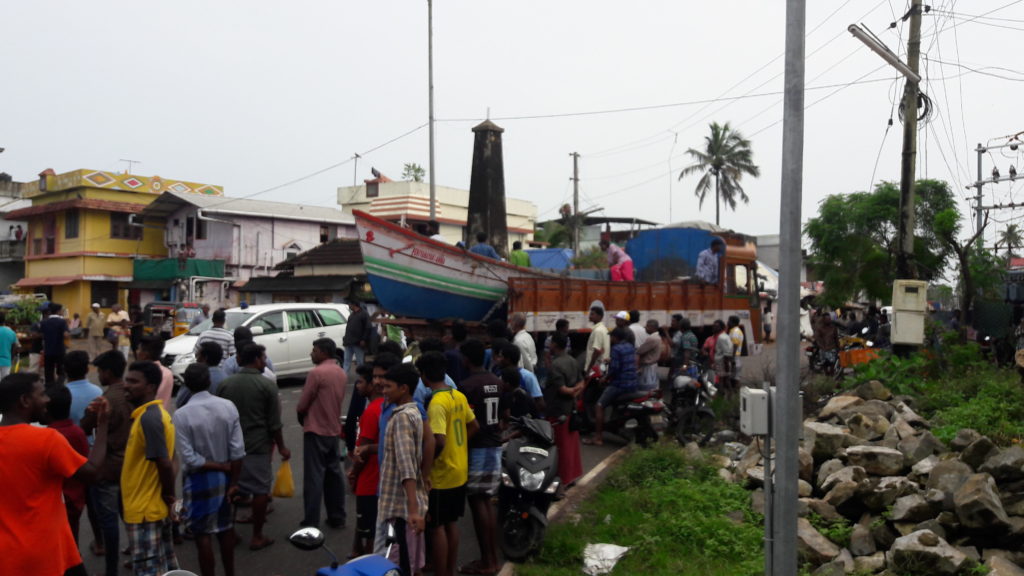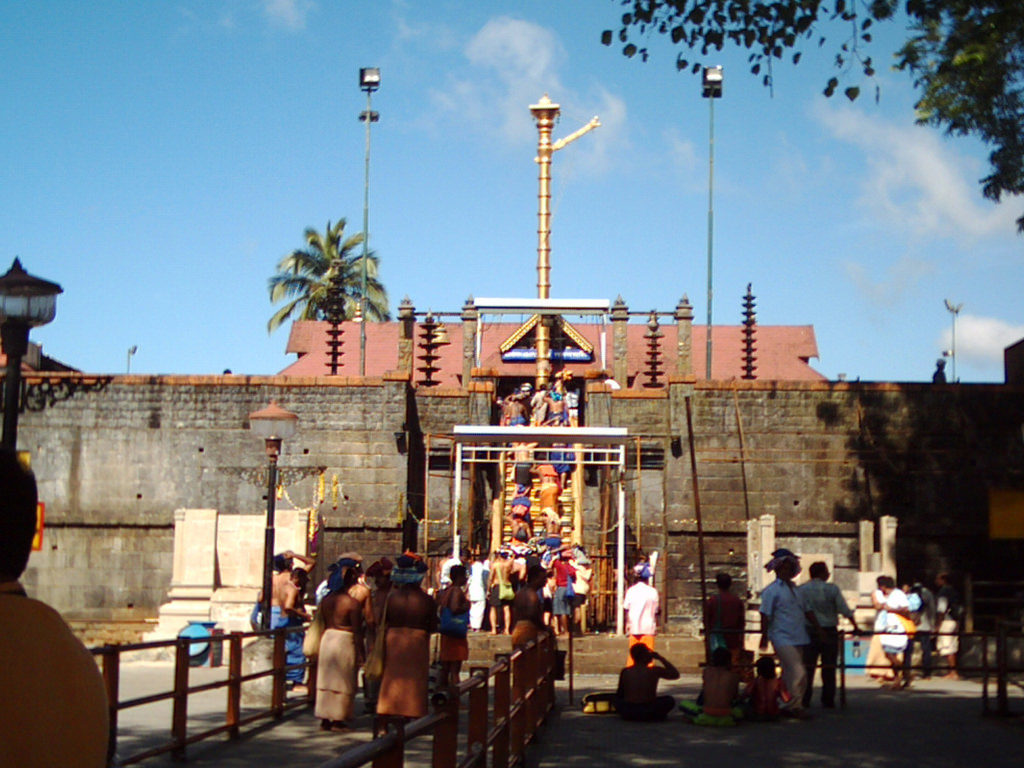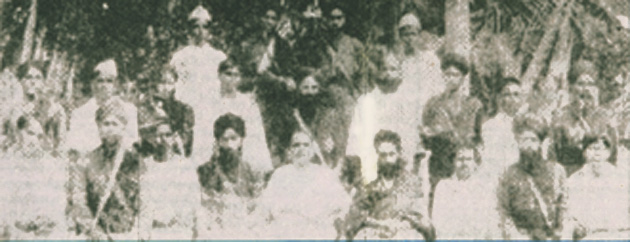Kerala, the southwestern state, which attracted worldwide attention in the 1970s by registering social development indices comparable to those of the industrialised West and has continuously topped the list of Indian states in human development since data collection in this regard began in 1995, is sending contradictory signals.
In August 2018 the state experienced the worst floods in living memory. Heavy downpour over several days filled the dams and, when the reservoir shutters were raised, water rose in the rivers and other water bodies, overflowing and submerging many towns and villages. About 500 people died and a million homeless sought refuge in relief camps. Setting aside political and sectarian differences, people worked with the official agencies in the massive rescue and relief effort. Fishermen from coastal districts loaded their boats on trucks and rushed to inland towns, unasked, and rescued several hundred people stranded in the upper floors of marooned houses.
When the worst was over, officers in Kochi discovered that a young man who was with them for eight days, carrying heavy loads on his head, was K. Gopinathan, IAS, Collector of Dadra and Nagar Haveli. On learning of the devastation, he had come home to do his bit for his people.

It was Kerala’s finest hour in recent times. It looked as though it had become “a model place where all live as brothers without caste differences and religious hatred”. The words in quotes were written by Sree Narayana Guru at Aruvippuram, near Thiruvananthapuram, in 1888 after consecrating a Siva idol, defying the Brahminical order, and setting up a makeshift temple for the benefit of those who were denied access to places of worship controlled by caste supremacists. It was the clearest exposition of the goal of the Kerala Renaissance, which had started rolling a few years earlier when at Cherthala a woman chopped off her breasts in protest against Travancore’s obnoxious breast tax and women of the Channar community started covering their breasts.
In September 2018, the Supreme Court ruled that the practice of barring women of menstruating age from the ancient Sabarimala shrine on the Western Ghats violates the Constitutional guarantee of gender equality. The judgment was welcomed by leaders of the major parties, including the Bharatiya Janata Party (BJP) and its ideological mentor, the Rashtriya Swayamsevak Sangh (RSS). The hereditary Thanthri (head priest) of the temple, backed by associations of Brahmins, descendants of a former feudatory at Pandalam, the Nair Service Society, organisation of a Hindu forward caste, and sundry groups claiming to represent devotees of Ayyappa, the Sabarimala deity, opposed the verdict, alleging interference in a religious tradition. Soon, however, the local units of the BJP and the RSS, sensing an opportunity to make electoral gains in the state, which has been hostile to their Hindutva ideology, changed their stance, and vowed to block women’s entry into the temple. The Congress followed suit. The national leaderships of the BJP and the Congress allowed the state units to follow a line different from theirs.

When the temple opened for the next pilgrim season, the RSS-BJP combine organised massive protests against the court ruling. Women gathered in large numbers at public places and chanted prayers, blocking traffic. Goons who lined the trekking route to the temple beleaguered all women seen on the path, including journalists on duty.
The Communist Party of India (Marxist)-led state government proclaimed its determination to implement the court order and the police said it would offer protection to women devotees. However, women who reached the temple, braving the protesters and the goons, were persuaded by the police to return without entering it. The scene repeated itself every time the temple opened thereafter.
This was a Kerala vastly different from the one seen during the deluge. The entire society, not just Hindus, stood polarised with some members of the minority communities making common cause with Hindu orthodoxy, actuated by fear of possible judicial intervention in their religious practices too. The ugly stir appeared to pull Kerala down to the level of the BIMARU states.
To understand the seeming shift in the Malayali mood in the course of a month or two, one needs to understand how the Kerala Renaissance developed and how some of its gains were subsequently subverted. Some scholars have lately questioned the claim that the state witnessed a renaissance. According to them, what the state saw was only a set of social reforms. Since we use the term ‘renaissance’ in the context of the European experience, we can approach this issue the way foreign scholars did. They have postulated that, unlike a reform movement which addresses specific social or other practices, renaissance is a multilevel movement that extends to different fields of human activity. Some critics have pointed out that there was no plan for a total transformation of Kerala society, as though renaissance is plotted like a revolution.
Kerala society was divided by walls of caste and religion in the 18th century. One could determine the caste and religion of a person at a glance. The reform movements which began within the different compartments eventually spilled over and coalesced into a movement that embraced almost all. A century later it was no longer easy to identify one’s caste or religion by the clothes one wore or the way one cropped their hair.
Vaikunta Swami, Narayana Guru, Ayyankali, Chattampi Swami, Vakkom Abdul Khade Maulavi, Poykayil Yohannan and V.T. Bhattathiripad raised many issues other than reform of their communities’ practices. A modern education was a part of the agenda for all of them. Vaikunta Swami called the Travancore rulerneech (evil) and his British overlordven neech (white evil). Chattampi Swami questioned the authority of the Vedas. Ayyankali’s attempt to put a Dalit girl in school and Bhattathiripad’s campaign for widow re-marriage in the Namoodiri community were early intimations of the demand for gender parity.
Whatever the religion, one must become a better human being, Narayana Guru declared. He also said caste, religion, dress and language should not separate man from man. He advised his followers to better their lot through agriculture and industry. An industrial exhibition held in 1905 at Kollam, along with the second annual conference of an organisation he founded, was the first of its kind in India. Many of the so-called ‘traditional industries’ which collapsed in the latter half of the last century due to multiple factors, including trade union militancy, had come up during the Renaissance. Heeding the Guru’s advice, Kumaran Asan, a poet of renown, set up a tile factory. The Guru’s followers were also pioneers of the state’s trade union movement.
The spirit of the Renaissance is discernible in the works of Malayalam writers who came up from the 1930s. It also found its way into the theatre and the cinema.
When political parties emerged, the people radicalised by the reform movements looked up to them to carry the Renaissance forward. Accordingly the Congress organised the Vaikom satyagraha of 1924-25 for opening of the roads around a temple to the so-called lower castes. When the Communist Party of India came out of the Congress fold in the 1940s, large sections of the underprivileged, enthused by its slogan of equality, rallied behind it. The party’s ascent to power in 1957, just 10 years after Independence, marked the zenith of the Renaissance at the political level.

A backlash began when regressive forces, beaten back by the Renaissance, regrouped and challenged the Communist government, angered by its two reform measures. The feudal elements resented the land reform which envisaged a ceiling on holdings and distribution of the surplus to landless tenants. The Church which dominated the education scene was infuriated by the bid to regulate appointment of teachers. The Congress and other opposition parties joined hands with them. Neither reform measure hurt the interests of the numerically strong backward Ezhava and Muslim communities but their organisations also joined the stir. The Centre dismissed the state government, citing breakdown of law and order.
In the elections that followed, the CPI polled more votes than in 1957 but power eluded it as the other major parties had combined against it. The splits in the CPI and the Congress intensified the struggle for power and this presented the communal forces an opportunity to dig in and gain political legitimacy. The next two decades saw the rise and fall of coalition governments in which breakaway groups of both parties collaborated among themselves and with other parties, including sectarian ones. Ideology became irrelevant. Every party could now join hands with any other.
In the late 1970s, massive inflow of remittances from Non-Resident Keralites began and it transformed the socially advanced but economically backward state into one high up in per capita income as well as expenditure. The see-saw struggle over land reform ended during this period with the adoption of a watered down measure which did not involve any major social changes and was acceptable to all parties. In the early 1980s a stable polity with two fronts, one led by the Congress and the other by the CPI(M), emerged. They have been alternating in power since then. Both fronts contain regressive elements.
The two-front system was a social contract which put an end to the struggle between forces wishing to carry the Renaissance forward and those wishing to roll it back. It effectively blocked the advance of the Adivasis and the Dalits. In the 1970s both the Congress and the CPI(M) had backed a law to reclaim and return to the Adivasis their lost lands. Through the 1980s both fronts put it in cold storage while in power. In the 1990s they collaborated to scrap that law and substitute it with one providing for allotment of alternative land. Most Adivasis are yet to get the promised alternative land. The cries of the Dalits and other landless people with interest in cultivation of farm land have fallen on deaf ears.
Kerala is media-rich and the role of the newspapers and television channels in the making of the current scenario merits attention.
The print media had played a very supportive role during the Renaissance. Many of its leaders had their own publications to propagate its ideals. The mainline publications went with the movement and benefited from it. There was a marked intrusion of political considerations during the campaign against the Communist government, and most newspapers still have an anti-communist undertone. Their inability to block the CPI(M)-led front from coming to power indicates the media is not a decisive factor in electoral politics. The electronic news media, with its noisy nightly debates, has not made a difference to the situation. It has merely strengthened pre-existing political preferences and prejudices. The entertainment media has made a huge contribution to the growth of regressive forces. Its serials and other programmes have reinforced feudal values instead of imparting lessons appropriate for the present.
It is tempting to see the Sabarimala issue as one that offers an opportunity to carry forward the sabotaged Renaissance. However, it is not a social or religious project, but a purely political one. The core issue is not any temple or religious practice, as the agitators try to make out, but the right to equality.
Temple practices in Kerala have seen changes on a continuing basis. The 1936 proclamation of the Maharaja of Travancore throwing open temples under his government’s control to all Hindus, irrespective of caste, is a classic example. After Independence, Devaswam Boards were set up to administer temples under the government’s control as the state is secular. The Travancore Devaswam Board introduced some major changes in the early years. These included abolition of hereditary rights of some families at Sabarimala and creating a fair system for appointment of priests. It also made arrangements to train non-Brahmins to perform priestly functions. Its reforming zeal ended after orthodox elements gained control of the Board with both the Congress and the CPI(M) picking persons acceptable to powerful caste organisations as its President and members.
Changes in religious practices, as in other areas, must come about on the basis of informed public opinion. Progressive sections of society must play their legitimate part in building up such opinion.The Kerala Sasthra Sahithya Parishad, a non-government organisation, ran several campaigns against superstitious practices in the last few decades. However, instead of diminishing, such practices grew during this period. The organisation’s failure may at least in part be due to its association in the popular mind to the atheistic Communist movement.
The venom in the social media protests is a sure indication that the campaign is political, not religious in nature. Some social forces which joined the protests on religious considerations withdrew when they recognised its political character. While the BJP can make some gains from this campaign, its hope of repeating Tripura is a pipe-dream. What remains of the Renaissance spirit in the public space is sufficient to prevent a Hindutva upsurge. A moot question is whether the BJP will draw enough Hindu votes from the Congress and Communist camps to upset the two-front system.
